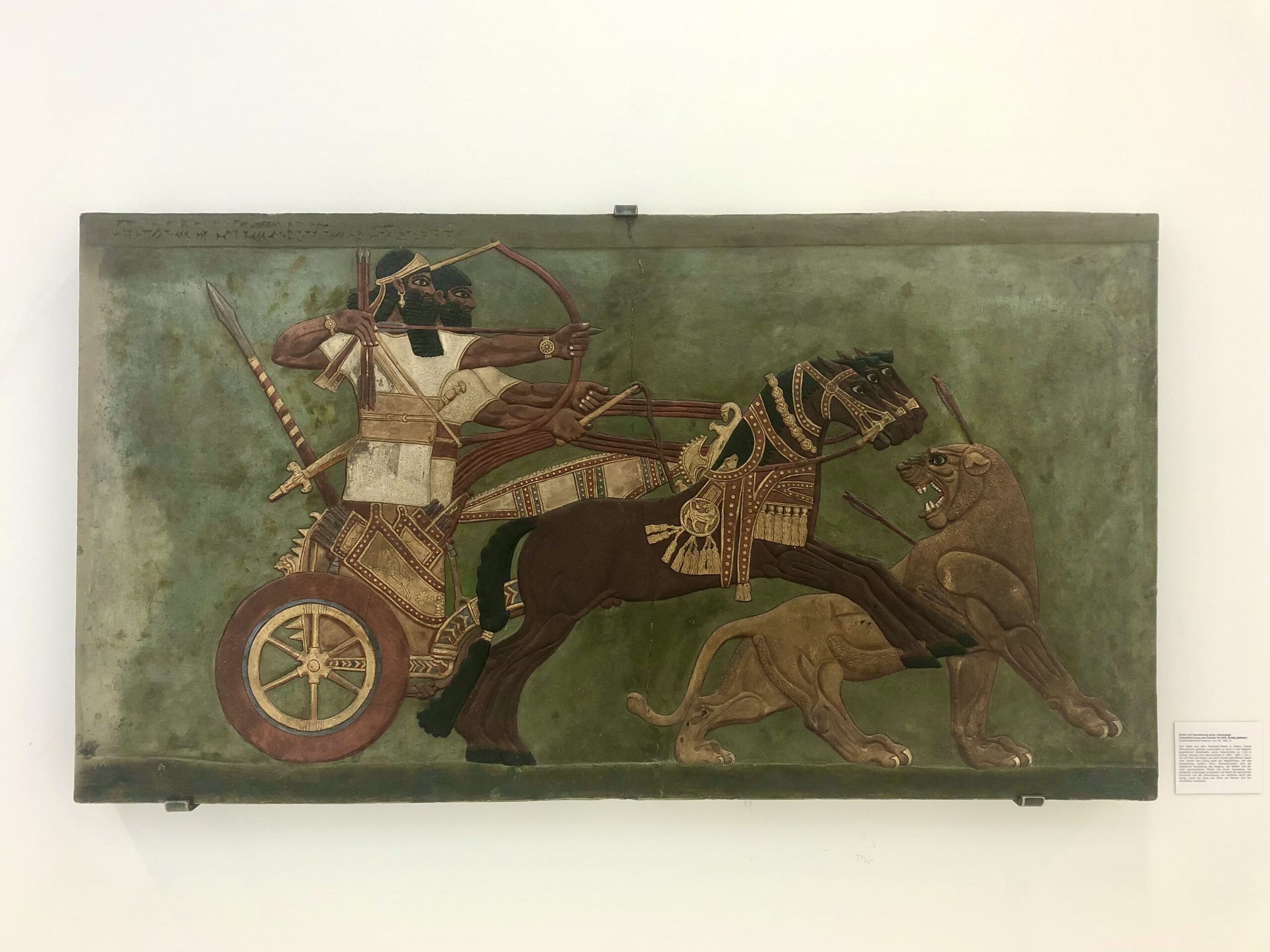
(Hi)stories Set in Plaster: Ancient Western Asian Reproductions and the Berlin State Museums
MAY 2022 | Vol. 10.5
By Pınar Durgun
The past and present of plaster copies
Just before the reveal of “Göbeklitepe-like” Neolithic sites in Karahantepe and Sayburç/Turkey in the fall of 2021, it was announced that a replica of a Göbeklitepe pillar was gifted to the UN headquarters in New York City. The replica was carved by Ahmet Demirtaş, an archaeologist and sculptor from Şanlıurfa, and his team. The Göbeklitepe pillar joins the UN collection of gifts that include a copy of the “Edict of Cyrus” from Iran and a copy of the Hammurapi stele from the government of Iraq.
Governments, museums, and organizations have produced and exchanged copies of artifacts for centuries to foster diplomatic relationships. But education has always been one of the most important reasons to create and display reproductions. A humble medium, plaster, has been at the forefront.

The Gipsformerei’s shop entrance, Charlottenburg/Berlin. Photo courtesy of the author
But the idea of copying is not new. We know that the text of the Hammurapi stele was copied in various Mesopotamian scribal schools and that copies were kept in libraries for hundreds of years. Even today, copies of the Hammurapi stele in the Harvard Museum of Ancient Near East, the Oriental Institute of the University of Chicago, and the Yale Babylonian Collection are used in ancient western Asian language instruction. These copies enable students to examine the cuneiform text in the form it was originally seen.
The Vorderasiatisches Museum (VAM) in Berlin has an extensive plaster copy collection on display, including a copy of the Hammurapi stele, the original of which is on display at the Louvre. The Mouleur du Musée Napoléon (now the L’atelier de Moulage de RMN-Grand Palais), plaster cast maker for the Louvre, created the molds and copies. But the majority of the VAM’s collection of copies were made by the Gipsformerei (plaster workshop) of the Berlin State Museum.
Today, the Gipsformerei, created in 1819, is the world’s largest and still operational plaster cast producer. Its collection of 7000 plaster cast copies includes objects such as the Ishtar Gate lions, Syro-Hittite orthostats, and cuneiform tablets. These copies have been sent across Europe to university and museum collections in Germany and can still be bought from the workshop today. Some of these copies and molds are over a century old.
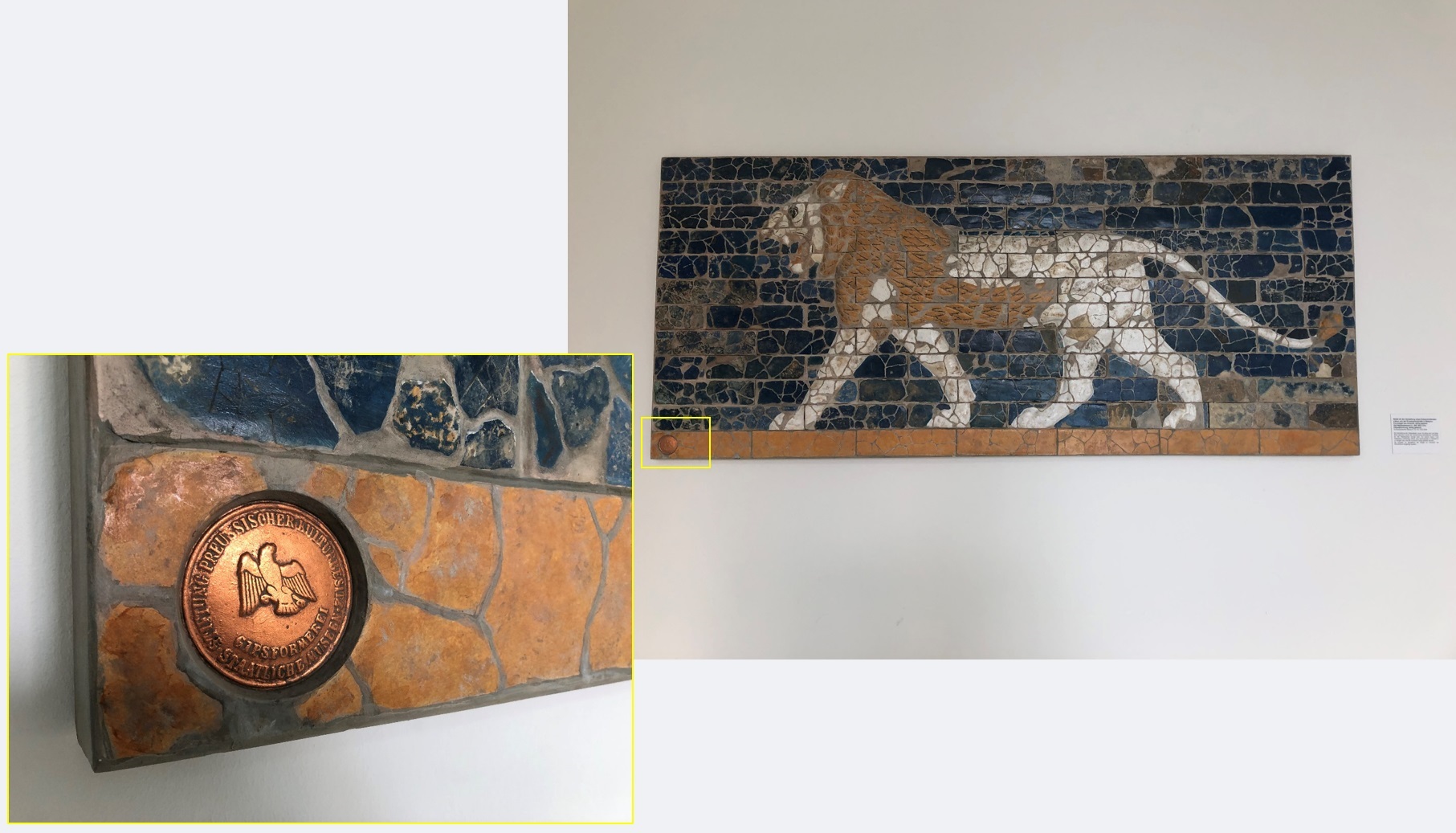
Seal of the Gipsformerei on the plaster copy of one of the Processional Way lions (VAG 2550). The original lion was made of glazed bricks. Copy based on VA Bab 01379, from Babylon (Iraq). Workshops that produced the casts and copies took pride in their craft and created seals to mark their work. Image courtesy of the author.
At the time when the Gipsformerei was established, reproductions were commonly used to fill “gaps” in museum collections. In the VAM copies of the Uruk Vase (original in the National Museum of Iraq, Baghdad), the Stele of Hammurapi, and Assyrian lamassus (originals in the British Museum) highlight the must-haves of the art/historical “canon” of ancient western Asia from the last two centuries. The VAM copies were exhibited alongside original objects from Uruk, Babylon, and Assur, excavated in the 19th and 20th centuries by the German Oriental Society. The display labels identify the copies as “Gipsabformung” (plaster casts), but their high quality makes them difficult to distinguish from the originals.
In the Vorderasiatisches Museum, plaster copies also helped fill physical gaps. Many objects were carried off after World War II from the Berlin Museums to the Soviet Union by the Soviet Trophy Commission. When the Vorderasiatisches Museum reopened partially in 1953, copies of the Assyrian reliefs (that had been bought from the British Museum in the 19th century and were taken during WWII) were exhibited in the empty spots left by missing reliefs. The Soviet Union returned the originals to the VAM during the period of German Democratic Republic. Today there are still copies on display in the Assyrian galleries, two lamassus. One of the lamassus is a copy of the British Museum lamassu, the other is copy made of this copy in Berlin. Another Assyrian relief copy, now on display in the Archäologisches Zentrum, is in color to give viewers an idea of how Assyrian reliefs might have looked originally. In an update of this approach, the Bowdoin College Museum of Art has recently tried to reconstruct the colors of an Assyrian relief using digital tools.

Plaster copy of Ashurnasirpal II’s lion hunt relief, VAG 19. Original from the Northwest Palace at Kalhu (modern Nimrud/Iraq), VA 00959. Vorderasiatisches Museum. Photo courtesy of the author.
The architectural and sculptural copies at the VAM are in some aspects unique in the ways they have been exhibited in the galleries. Reproductions, both plaster copies and large scale paintings, were created to provide an architectural experience for the visitors. This was the goal of the museum’s curator and director, Walter Andrae (1875-1956), who was originally trained as an architect. But his sister Elisabeth Andrae was the artist behind the murals, which she painted by looking at another type of reproduction: photographs. The paintings of excavation sites have filled the high walls of the galleries for almost a century and still help contextualize the objects on display.
Copies enabled archaeological museums to share information about finds that were excavated or studied abroad. The first plaster casts of the Yazılıkaya reliefs from the Hittite capital of Hattusa, commissioned by the German engineer and architect Carl Humann in the 1880s, are still stored in the Gipsformerei, and copies of them are on display in their own gallery in the Pergamon Museum. Some of these reliefs are not exact copies but replicas (meaning that they were altered in some ways). For example, the famous scene with the “twelve underworld gods” shows only five of them.
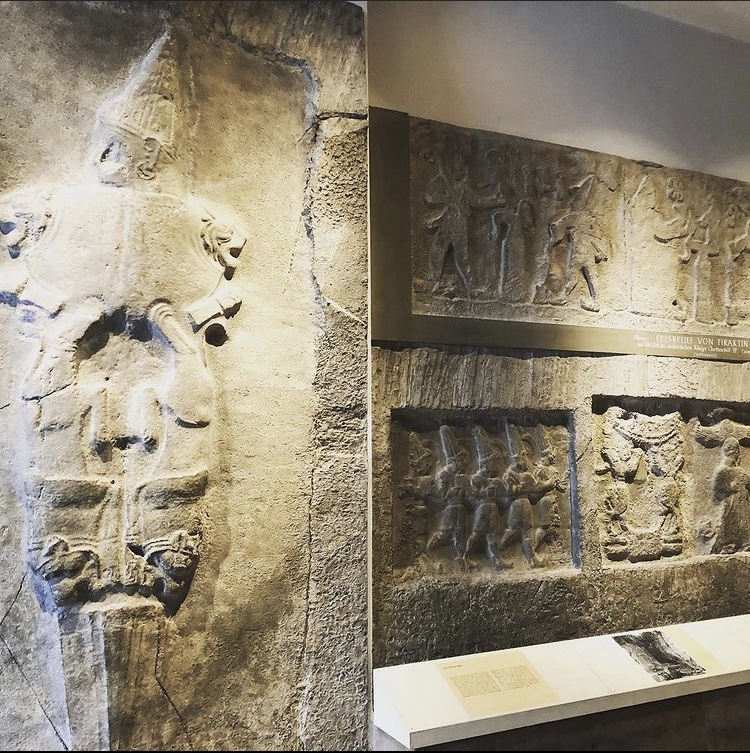
Plaster copies of the Yazılıkaya (VAG 71) and Fraktın (VAG 01018) reliefs on display in the Pergamon Museum. The five “underworld gods” can be seen on the right center (VAG 53). Photos courtesy of the author.
The Vorderasiatisches Museum has copies made by the Gipsformerei to loan to other museums for temporary exhibitions. The 19th and 20th century casts successfully accomplished at least two things that 3D computer models and 3D prints try to accomplish today: expanded access and conservation of originals. Visitors of small local museums across Europe could see objects they otherwise they would not be able to, especially before the development of the Internet. Even more recently, in 2002, the Yazılıkaya copies were shown in Bonn and Berlin as part of the exhibit “The Hittites: Nation of 1,000 Gods”. Exchanging copies, rather than loaning originals, reduces the pressure on ancient objects and the complications that go into transporting fragile originals.
The gifting of copies and replicas was also a common practice for the Berlin State Museums. Important political figures visiting the Pergamon Museum, where the Vorderasiatisches Museum collection is exhibited, would receive a copy of objects from the collection as a gift after the photo op in front of the museum’s famous installations, such as the Ishtar Gate or the steps of the Pergamon Altar. Indian Prime Minister Indira Gandhi, for example, during her visit to East Germany in 1976, received a copy of the famous “basket carrier” figurine. The recent special exhibit “Nebuchadnezzar during Socialism. The Vorderasiatisches Museum in the GDR” features videos of these state visits together with gifted copies.
The future of plaster copies
Even though copies have always been an essential aspect of exhibits, education, research, and public outreach at the Berlin State Museums, others – particularly art museums – have not valued their copies in the same way. Many were relegated to dusty basements or even disposed of. Now with growing demands for repatriation of original artifacts, the limitations caused by the pandemic, and the need to make museums more accessible, plaster copies are having a comeback. For example, the recent children’s exhibit in Berlin’s Humboldt Forum includes a plaster copy of the stele of the 8th century BCE Neo-Hittite king Bar-Rakib and his scribe for children to touch and contemplate the gesture of sitting.

The copy of Barrakib’s stele in the Humboldt Forum children’s exhibit “Have a seat.” The signage encourages visitors to touch it. Original from Zincirli/Turkey, VA 02817. Vorderasiatisches Museum. Photo courtesy of the author.
In 2019/2020, the Gipsformerei celebrated its 200th anniversary with the exhibit “Near Life: 200 Years of Casting Plaster” and an accompanying symposium asked important questions about the future of reproductions. Veronika Tocha, a curator working in the busy workshops of the Gipsformerei, says that the best way to produce copies with the tools and resources we have now is to adopt a hybrid approach combing plaster casting and 3D modeling. Her hope is that in the future, copies and casts will be also valued as autonomous objects and that they will be more comprehensively researched and systematically conserved. She currently works on a project to research and document 300 historical casts and copies.
Similarly, the VAM is conserving and digitally documenting their reproductions, including seal impressions and plaster copies. Nadja Cholidis, curator at the VAM, notes that some of the old seal reproductions (the rolled-out impressions) were made in unusual materials such as sealing wax and tin foil. These are deteriorating more quickly compared to the polymer clay ones used today. Cholidis’ documentation is not only necessary but also timely due to the renovation work going on in the museum. Prior to relocation, all objects in storage, including copies, are digitally documented and physically stabilized or restored.
Before 3D models and online databases were available, the extensive plaster casts of inscriptions, seals, and cuneiform tablets in the VAM collection enabled generations of scholars to study them. Today, the VAM is one of the main collaborators with the Cuneiform Digital Library Initiative. So far, over 13,000 inscriptions from the Vorderasiatisches Museum collection have been digitally cataloged by the CDLI and more are being digitized.
3D technologies try to accomplish the same goals that the plaster casts set out to achieve almost 200 years ago – education, preservation, collaboration, and access. While 3D modeling and printing enable us to make copies easier and faster than plaster molds, we should also be aware of the ethical pitfalls of reproducing ancient objects. The past of copies is full of curious stories and can teach us many lessons. The future of copies, on the other hand, should be a responsible and critical one.
Pınar Durgun is a curator at the Vorderasiatisches Museum, Berlin State Museums. All photos, except Fig. 2, are by the author.
Further reading
Haak, C., M. Helfrich, and V. Tocha. (eds) 2016. Casting. A way to embrace the digital age in analogue fashion? A symposium on the Gipsformerei of the Staatliche Museen zu Berlin. Heidelberg. (PDF Online)
Rehm, E. 2018. Wertvolle Kopien. Gipsabgüsse altorientalisher Denkmäler in Deutschland. Münster: Zaphon.
Tocha, V. 2019. “Anthropological Casts in the Collection of the Gipsformerei: A Stocktaking.” In Near Life. The Gipsformerei – 200 Years of Casting Plaster, for the Staatliche Museen zu Berlin, ed. by Christina Haak, Miguel Helfrich and Veronika Tocha, p. 64-66. München, London, New York (Prestel).
How to cite this article
Durgun, P. 2022. “(Hi)stories Set in Plaster: Ancient Western Asian Reproductions and the Berlin State Museums.” The Ancient Near East Today 10.5. Accessed at: https://anetoday.org/durgun-plaster-museums/.
Want to learn more?
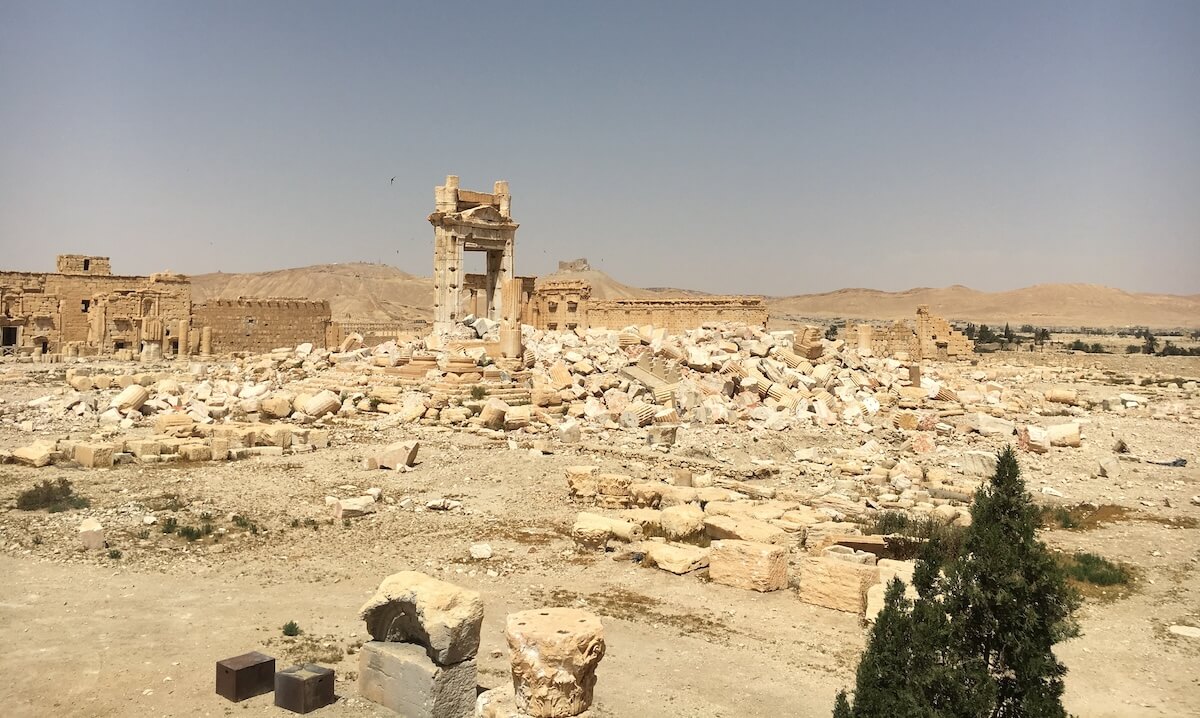

Is it Ethical to Continue Excavating the Dead in the Ancient Near East?
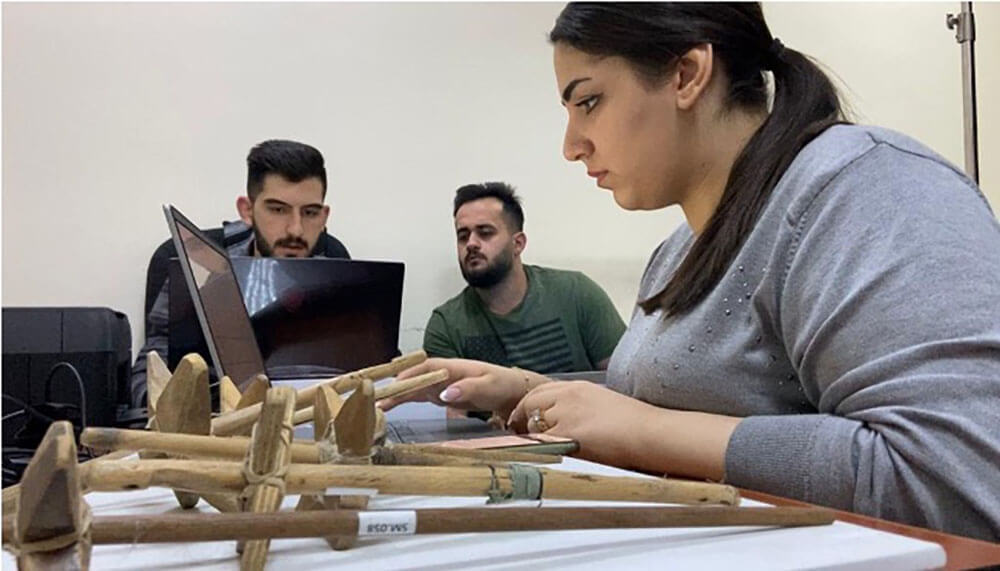
Digitizing Cultural Heritage: Challenges, Opportunities and Best Practices
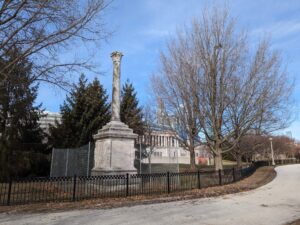

Post a comment